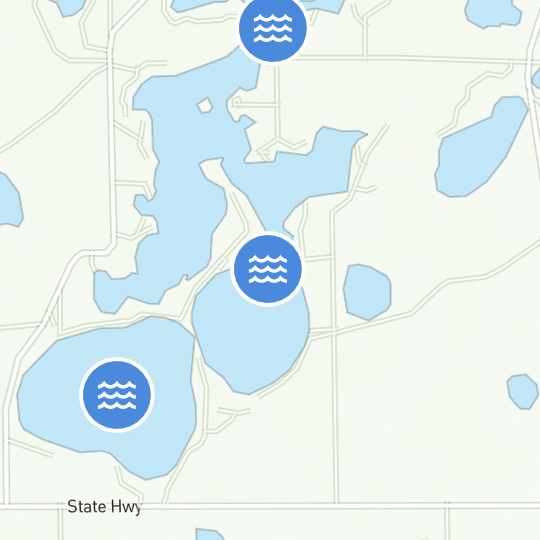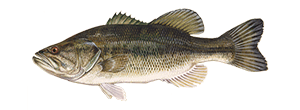Ice Fishing FAQs
Searching for a source of additional ice fishing information? Need to brush up on the ice fishing basics? Looking for a few ice fishing tips? Members of the USA Ice Fishing Team answer basic questions to provide ice anglers with the ice fishing info they need to plan their next fishing trips.
Ice fishing is truly an adventure. If you're a newcomer, we'll guide you through the essentials for a successful icy angling adventure.
Safety comes first. Check ice thickness at the local bait shop and get a lake map for key locations. When in doubt, seek advice from experienced anglers.
Learn about essential equipment such as power augers versus hand augers, and discover beginner-friendly ice fishing techniques to kickstart your journey on the ice.
Whether you're a seasoned angler or new to the sport, our Ice Fishing FAQs will provide invaluable insights to ensure a successful and enjoyable ice fishing trip. So, bundle up, grab your gear, and let's explore the thrilling world of ice fishing together!
Where should I ice fish on a lake?
First, I recommend calling the local bait shop and asking about the ice thickness and safety. Ask to see a map of the lake or check the state agency website for a lake map. The best first place to start ice fishing on a new lake during early ice season is the largest weed bed on the lake. Ice anglers are usually friendly and helpful so ask for advice.
When ice fishing for the first time, what is the best lure/bait to try first?
It's always best to stop in the local bait shop and ask what the fish have been biting. Some of the ice fishing basics includes a small jig, preferably tungsten and a few maggots. If another angler is catching fish and you are struggling, take some time to watch and learn.
Live bait or artificial lures?
Generally, live bait will almost always outperform artificial bait. Always start with a few maggots. Fine tune the number of maggots from one to a full hook depending on what the fish prefer. I prefer plastics though because they never die and have multiple colors and sizes. Remember that you do not want your maggots to freeze, so consider keeping them in a tightly closed container in a pack or close to your body so they do not freeze.
What are some signs above the ice that you notice that might help to know there are fish below?
If the ice is covered in snow, look for holes that have already been created. These probably had some good activity already. In a shanty town of fished holes (group of shanties close together) check the ones that look like they have been fished the most.
Which is best, a power auger or a hand auger?
Both devices work well. I typically use a hand auger early in the season, then a power auger when the ice is thicker mid-season. A hand auger is nice because it's a little quieter, so you are less likely to spook the fish.
What ice fishing technique do you recommend a novice try first?
The best thing about ice fishing is the fish will always tell you what they want. You just need to pay attention. Always check fishing reports or forums for current information. There is nothing more simple or successful than jigging from the bottom up until you find where the fish are biting. Jig for a while on the bottom. If you don't get a bit, pull your bait/lure up a foot and jig there. Keep doing this until you find some activity. Once you find the zone in which they are biting, focus on that area each time you drop your bait. Learn more about other ice fishing techniques.
When is it safe to start ice fishing?
Always check with the local bait shop or your state agency before going on the ice. A good rule of thumb is to wait until the ice is 4 inches thick. A general rule of thumb is ice is safe when it's four inches thick, which usually occurs after a week's worth of nights where the temperature is below freezing. Check with your state agency or local bait and tackle shop on ice conditions before heading out to ice fish. Once out near the lake or pond, always check the ice thickness before venturing out.
What types of fish can I catch while ice fishing?
Shallow water weed beds in the Midwest predominantly have bluegills and often crappies. Perch are usually found in colder deeper lakes especially in the Dakotas. Tip up fisherman using minnows or roaches for bait will be targeting larger species like Northern Pike or Muskellunge.
If I am not able to purchase a new rod, which of my current rods could I use?
Ice fishing rods use float bobbers or spring bobbers for strike indicators. The floats used in ice fishing are much smaller than what is used in open water fishing. You can always find fishing rod and reel combos at the local bait store. Worst case scenario is to borrow one from a fellow fisherman.
What types of equipment do I need to take ice fishing other than the basic rod or tip-up?
If you plan to fish a community spot or shanty town as long as the weather isn't extremely cold, holes should be open so an auger isn’t necessary if you don't already have one. And you can always ask to borrow one or have an angler drill a hole for you. Basic necessities include a fishing pole with spring bobber, small jigs, bait, bucket to sit on and warm clothes. Learn more about ice fishing gear and fly tying hooks.
What other activities can I do while I ice fish?
Kids love to play on the ice and in the snow. Most of the time it's not necessary to have other activities planned. They will find a way to have fun. Family gatherings are always more fun outside when there is hot food. So bring a grill along and cook some hot dogs. Plan to make friends and bring along plenty of extras.
Photo courtesy of Michigan Department of Natural Resources.
KEEP LEARNING

How to Tie the Non-Slip Loop Knot
The non-slip loop knot is a popular and reliable choice for securing hooks, lures, and other tackle to your fishing line.
LEARN MORE

Socials
Take me fishing social media links
LEARN MORE

TakeMeFishing x Teen Vogue
Join us on a creative journey as fashion designer Ahmrii Johnson walks us through her collaborative vision and process with Teen Vogue and fashion brand, Rentrayage, to create a special piece.
LEARN MORE


.png?lang=en-US&ext=.png)